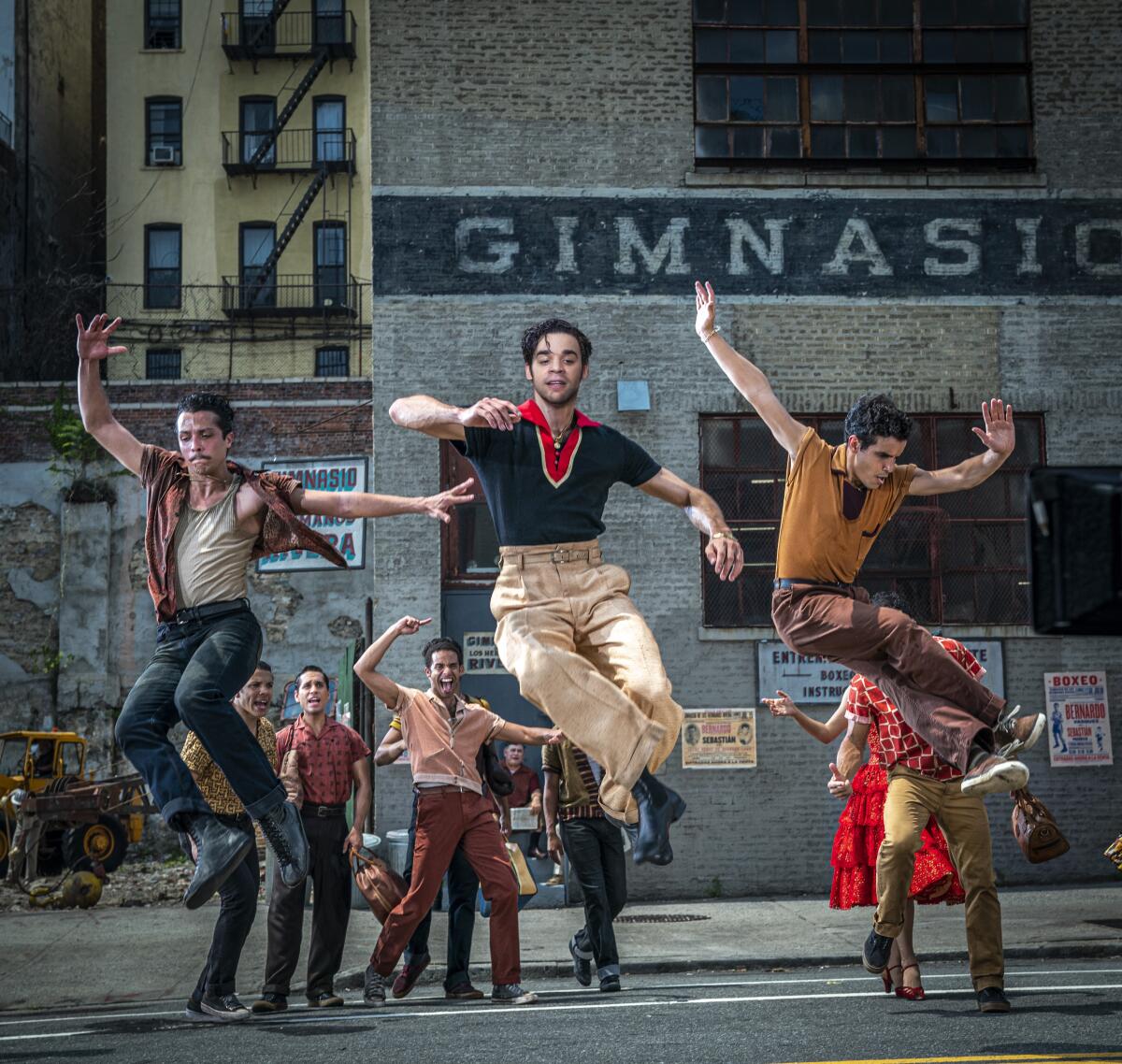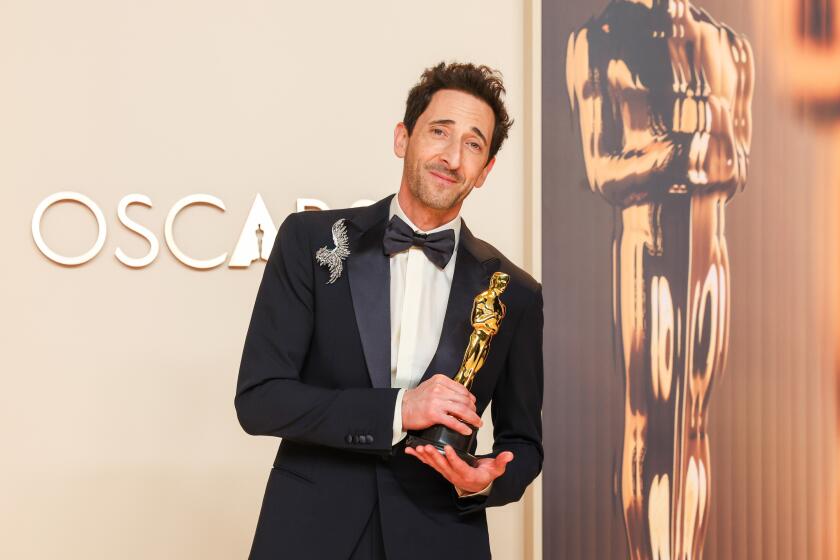A little insider knowledge of New York City goes a long way in ‘West Side Story’ shoot

- Share via
Production designer Adam Stockhausen has spent more than a decade building cinematic worlds for directors Wes Anderson, Steve McQueen and Steven Spielberg. It’s a long line of enviable collaborations, but two of the more noteworthy installments — “The French Dispatch” and “West Side Story” — hit theaters this last year, the latter of which earned Stockhausen his fourth Oscar nomination.
Spielberg’s idea of bringing a new version of the celebrated 1961 musical was first broached with his collaborator following the production of “Ready Player One” in 2016. The director had just one specific request for Stockhausen and his team and that was to make it “real” by shooting on location as much as possible. Stockhausen recalls, “So, how do we do that? Because it’s not simple to do big musical numbers like that on the streets of New York.” That’s where Stockhausen’s personal knowledge of living in the city came in handy.
“I was [living] a little bit below 66th Street, within 20 blocks for five or six years,” Stockhausen notes. “So, I knew those streets pretty well and have shot enough and scouted enough in New York that I kind of knew what was out there. I wasn’t too surprised about it, but I was surprised by the number of spots we were able to find where the city was able to help us get control. And there’s a big chunk of sort of upper St. Nicholas Avenue that we were able to re-route the buses and do some of the long sections of the ‘America’ number. And I was happily surprised that we were able to get that much of that avenue for as long as we got it.”
To transform the neighborhood, the production had to painstakingly approach one building after another constructing signage and awnings to age the streets and shops 60 years. Stockhausen says the work the art directors and set tech team did was “kind of relentless.” And that’s not even taking into consideration the community relations that comes into play. He notes, “You do a lot of dry fitting where you say, ‘Before you open in the morning, can we come and fit the sign, test everything, and then we’ll take it away and let you be open for the day?’” Sometimes, he adds, the team offered to make new signs for the shop if they’d allow the production to put its sign up for filming.
Despite some good luck for the “America” number, few neighborhoods of New York can pass for 1957 anymore, let alone allow you to shut down traffic for months at a time. Most of the film was going to need a controlled exterior set. After a long search, a partial solution for the film’s exterior scenes was found across the Hudson River in Paterson, N.J. Stockhausen and his crew reconstructed a Manhattan neighborhood on active city parking lots using stacked shipping containers with steel skeletons and foam to create authentic facades. The intersection and lots became the film’s “location alley,” where many key moments in the movie occur.
“We’d looked at a lot of stuff,” Stockhausen says. “And it was one of those things where you start walking around, you’re like, ‘Maybe, maybe.’ We sort of were walking in circles around this lot for about an hour and it was adjacent to a street area where we actually did a bunch of the Sharks territory work. So, then we’re like, ‘OK, this is pretty exciting.’”
A lot of preparation went into making sure location alley would fit with Spielberg’s vision. Not only did Stockhausen and his team build a model, but they had a camera fly through the area to provide Spielberg a real-world perspective. Yes, it was a big operation even before the filmmaker’s sign-off. What followed were “loads and loads” of engineering studies to then build it.
As with his relationships with McQueen and Anderson, it’s the creative connection with Spielberg that Stockhausen appreciates the most.
“We’re looking at these beautiful Walker Evans photographs of a construction site from the early ‘60s. We’re looking at a Bruce Davidson photograph of these gang members,” Stockhausen says. “And he’s pointing out what he’s excited by, and I’m pointing out what I’m excited about by it. The only way I know how to do it is just sort of getting there the old-fashioned way. And I really think he does too. It’s just not a formula kind of a thing.”
Considering the difficulties in reconstructing a bygone era of New York, you might assume Stockhausen considers “West Side Story” one of the toughest jobs of his career. He agrees it’s up there, but his latest project, a highly anticipated franchise film directed by James Mangold, might top it.
“There’s a tiny, little movie called ‘Indiana Jones’ in there,” Stockhausen says with a smile. “That’s posing a bit of a challenge, but it’s been interesting, that’s for sure.”
More to Read
From the Oscars to the Emmys.
Get the Envelope newsletter for exclusive awards season coverage, behind-the-scenes stories from the Envelope podcast and columnist Glenn Whipp’s must-read analysis.
You may occasionally receive promotional content from the Los Angeles Times.







